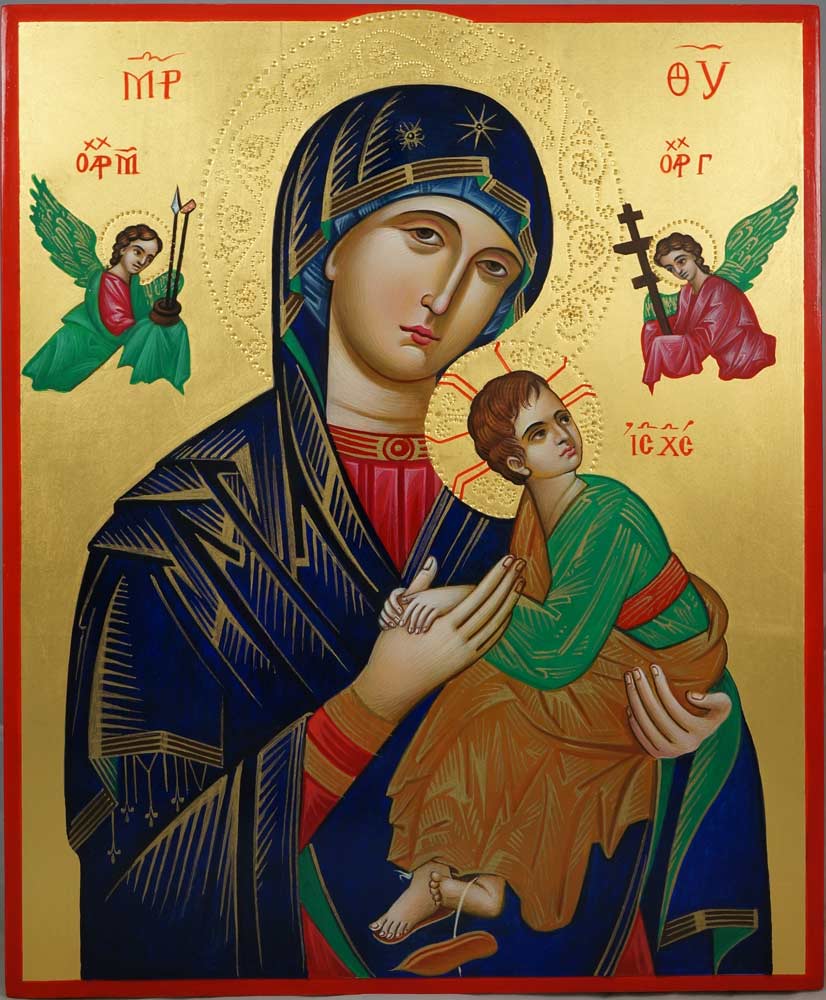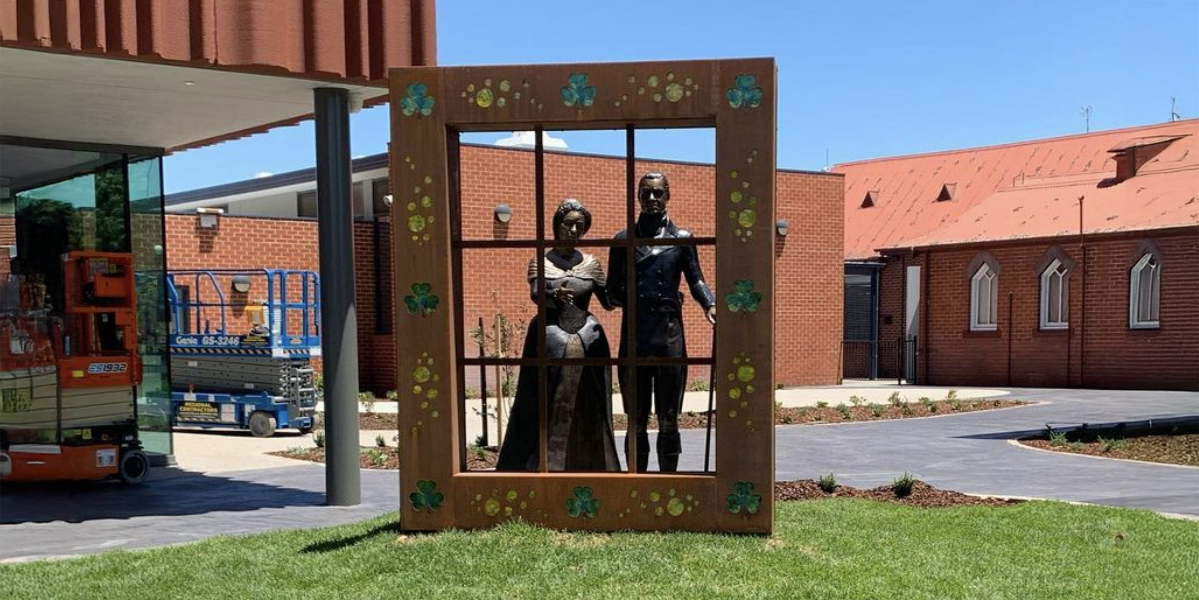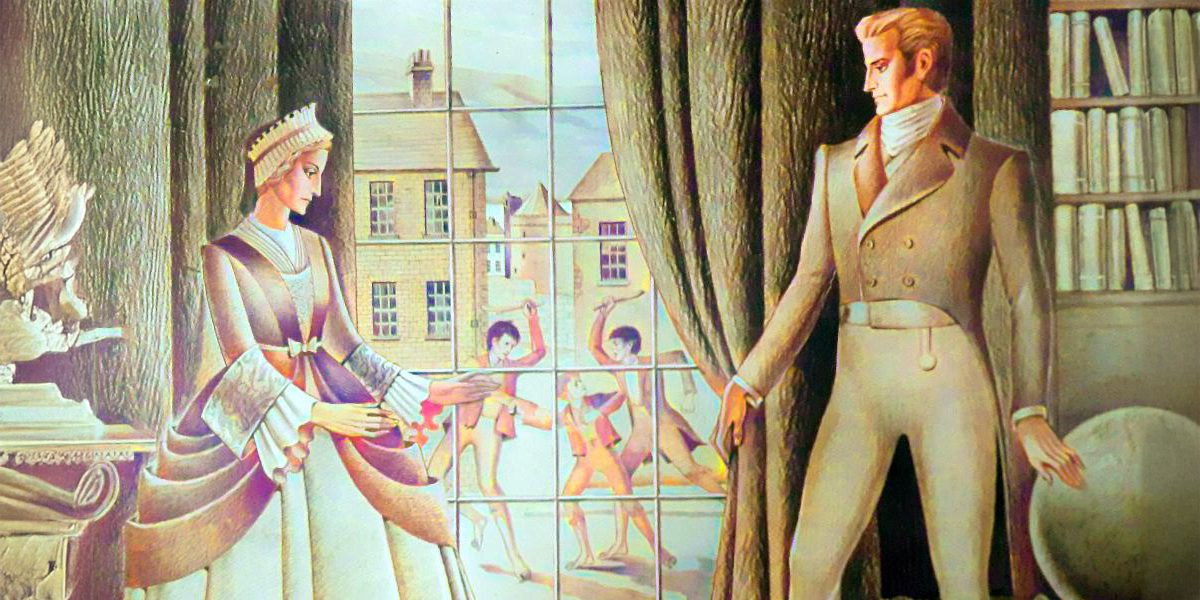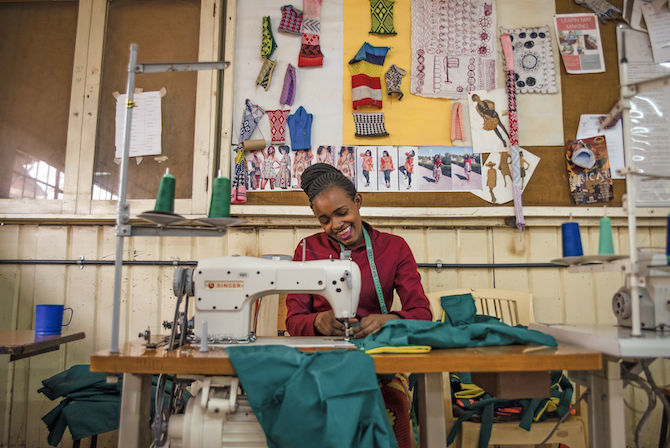Our Lady of Perpetual Help
- Details
- Hits: 10356

The Feast of Our Lady of Perpetual Help is celebrated on the 27th of June. There is a long tradition of celebrating the feast among the Christian Brothers.
The origins of the icon cannot be stated with certainty. It was stolen from a church in Crete some time before 1499 and is considered to belong to the "Cretan School" and is possibly by an Italian artist. Crete, from 1207 to 1645, was under the control of Venice and was a meeting place between East and West. It has been said that the icon presents an Eastern background completed by a Western foreground. Authorities differ as to the date on which the icon was painted, where and by whom.
It is modelled on the Hodegetria of Constantinople, a depiction of the Theotokos holding the Child Jesus at her side while pointing to him as the source of salvation for humankind, extending back to earliest Christian times, attributed to the brush of St. Luke. After being the object of veneration for over 1000 years, it was destroyed by invading armies in 1453.
Icons were not merely pictures of religious subjects but rather a presence, visible expressions of devotion both of the Byzantine artist and the one praying before it. The icon sought to give a glimpse of the suprasensible world, making the eternal clearer.
The considerable modifications in the icon of Our Lady of Perpetual Help reflect the drawing apart between East and West, represented by the schools of Alexandria and Antioch, in devotional outlook as well as artistic and iconographic expression.
![]() Painted on a slab of walnut, in the icon there are four figures, the principal being Our Lady. Dressed in a mantle of ultramarine, a very costly colour made from lapis lazuli, she holds the Divine Child on her left arm, his two hands resting on her right hand which is raised to meet and uphold them. The child places his hands in her care. The Virgin carries a green-blue veil-cap, symbolizing divine humanity. The covered head alludes to submission to the will of the Father. The golden edge that adorns her mantle signifies her dignity to which God has raised her. The mantles lined interior of red indicates that she is seat of Wisdom. The bow formed by the folds of the mantle when drawn under the figure of the Child is pointing to the sky.
Painted on a slab of walnut, in the icon there are four figures, the principal being Our Lady. Dressed in a mantle of ultramarine, a very costly colour made from lapis lazuli, she holds the Divine Child on her left arm, his two hands resting on her right hand which is raised to meet and uphold them. The child places his hands in her care. The Virgin carries a green-blue veil-cap, symbolizing divine humanity. The covered head alludes to submission to the will of the Father. The golden edge that adorns her mantle signifies her dignity to which God has raised her. The mantles lined interior of red indicates that she is seat of Wisdom. The bow formed by the folds of the mantle when drawn under the figure of the Child is pointing to the sky.
She inclines her head towards her son, her whole expression one of sorrow and compassion. Her eyes look outwards, towards the beholder. She is the co-suffering one. Her veil is an 8-pointed star, imposing two crosses. From her mantle hang small ornaments.
Above the Blessed Virgin, on either side of her head are the Greek letters MP and OY, contractions for Μήτηρ Θεού, “Mother of God”. Above the left shoulder of the child are found IC XC, contractions for ΙΗΣΟΥΣ ΧΡΙΣΤΟΣ, “Jesus Christ”. Above the angel at Mary’s right shoulder is OAM, O Αρχάγγελος Μιχαήλ, “The Archangel Michael”, while above the other is OAΓ, O Αρχάγγελος Γαβριήλ, “The Archangel Gabriel”.
![]() The Child is shown making a quick movement towards his mother for protection, the sandal slipping from his right foot in the movement. His head is turned towards the Archangel Gabriel who shows him the cross, yet his face is serene. The Child is wrapped in a red mantle covered with golden rays to indicate that He is Eternal (gold) Wisdom (red). He brings the green-water tunic that alludes to the Holy Spirit.
The Child is shown making a quick movement towards his mother for protection, the sandal slipping from his right foot in the movement. His head is turned towards the Archangel Gabriel who shows him the cross, yet his face is serene. The Child is wrapped in a red mantle covered with golden rays to indicate that He is Eternal (gold) Wisdom (red). He brings the green-water tunic that alludes to the Holy Spirit.
![]() The two angels, greatly reduced in size, issue from a golden background signifying paradise, and bear in their veiled hands the instruments of the Passion. Michael, clad in red with a green mantle, shows the lance and reed with a sponge, while Gabriel holds the Greek cross and nails.
The two angels, greatly reduced in size, issue from a golden background signifying paradise, and bear in their veiled hands the instruments of the Passion. Michael, clad in red with a green mantle, shows the lance and reed with a sponge, while Gabriel holds the Greek cross and nails.
So we consider the “Westernisation” of the icon
- The very title “Mother”, uncoupled from “Mother of God” in the Eastern tradition, allows for varied expressions of Mary’s divine motherhood.
- The angels are no longer functional adorers, rather their names are depicted and they are given a role of importance.
- The star reminds us that this is primarily an icon of the passion.
- The “fleur-de-lys” ornamentation is found in later icons and is of uncertain symbolism.
- To the majestic dignity of earlier representations of the Virgin are added sorrow, sympathy and even pleading. The figures of the mother and child become one, the Mother of God stands between God and us, pleading with us and ready to plead with her son for us.
- Eternal Wisdom has become a weak yet trusting child. He has seen the instruments of his future passion. He hurries to the protection of his mother, in his haste jerking off the sandal of his right foot. It is a far cry from the aloof majesty of Eastern icons.
Towards the close of the 15th Century, Crete feared a Turkish invasion and many inhabitants departed the island. One story tells of a pious merchant who brought the icon with him into exile for safekeeping. A violent storm erupted along the journey to Ostia and Our Lady of Perpetual Help was invoked to calm the winds. After the death of the pious traveller, the icon was left to a Roman family with whom he was friendly. Tradition has it that Our Lady appeared to the family several times, asking that the icon be placed for veneration in a Church between the basilicas of St. John Lateran and St. Mary Major. Thus, it is believed, the icon was moved to the church of St. Matthew around 1500.
Until 1798, what was then known as St. Matthew’s Church and its adjacent monastery were under the care of the Irish Augustinians who had been exiled from their country. The young students found an asylum of peace in the presence of the Virgin of Perpetual Help while they prepared themselves for priesthood, the apostolate and martyrdom. One of htese was John Rice, the younger brother of Edmund.
In 1798, war raged in Rome and the monastery and church were almost totally destroyed by Napoleon's invading army. Several Augustinians remained there for a few more years but in 1819, the Irish Augustinians moved to the Church of St. Mary in Posterula, near the “Umberto I” bridge that crosses the Tiber River. With them went the “Virgin of St. Matthew’s”. But as “Our Lady of Grace” was already venerated in this church, the newly arrived picture was placed in a private chapel in the monastery where it remained, all but forgotten.
In 1855 the Redemptorist purchased “Villa Caserta” in Rome, converting it into the general house. On this same property on Via Merulana, were the ruins of the Church and Monastery of St. Matthew.The Redemptorists were extremely interested in the history of their new property. In 1863, they were puzzled by a sermon given by the famous Jesuit preacher, Father Francesco Blosé, about an icon of Mary that “had been in the Church of St. Matthew on Via Merulana and was known as The Virgin of St. Matthew, or more correctly as The Virgin of Perpetual Help". The Superior General presented a letter to Pope Pius IX in which he petitioned the Holy See to grant them the icon of Perpetual Help and that it be placed in the newly built Church of the Most Holy Redeemer and St. Alphonsus
The Pope granted the request and on the back of the petition, in his own handwriting he noted: “December 11, 1865: The Cardinal Prefect of Propaganda will call the Superior of the community of Sancta Maria in Posterula and will tell him that it is Our desire that the image of Most Holy Mary, referred to in this petition, be again placed between Saint Johns and St. Mary Major; the Redemptorists shall replace it with another adequate picture.” According to the tradition, this was when Pope Pius IX told the Redemptorist Superior General: “Make Her known throughout the world!”. It was at this time that a crown of gold, set with precious stones, was placed on the head of hte Virgin's image and another on the head of the Child.
In 1990, the picture of Our Mother of Perpetual Help was taken down from above the main altar and it was then that the serious state of deterioration of the image was discovered; the wood, as well as the paint, had suffered from environmental changes and prior attempts at restoration. The Redemptorists decided to contract the technical services of the Vatican Museum to bring about a general restoration of the icon that would deal with the cracks and fungus that threatened irreparable damage.
The first part of the restoration consisted of a series of X-rays, infra-red images, qualitative and quantitative analyses of the paint, and other tests. The results of these analyses, especially a Carbon-14 test, indicate that the wood of the icon of Perpetual Help could safely be dated from the years 1325-1480.
The second stage of the restoration consisted of the physical work of filling the cracks and perforations in the wood, cleaning the paint and retouching the affected sections, strengthening the structure that sustains the icon, etc. This physical intervention was limited to the absolute minimum because all restorative work, somewhat like bodily surgery, always provokes some trauma. An artistic analysis situated the pigmentation of the paint at a later date (after the 17th century); this would explain why the icon offers a synthesis of oriental and Occidental elements, especially in its facial aspects.
Origins of Connections with the Christian Brothers
In 1875 a Synod of the Irish bishops, held at Maynooth, issued a number of Decrees "binding on Brothers who conduct schools". When the Decrees were made public in 1877 the Brothers objected and appealed to the Holy See. Brothers Anthony Maxwell and Austin Grace left for Rome in October 1877 to present their case. They encountered friends among the Irish clergy they met in Rome.
Two Redemptorist Fathers, Douglas and Morgan, who were very active in helping the Brothers present their case before the Sacred Congregation for Religious, were also ardent promotors of devotion to Our Lady of Perpetual Help. They recommended placing the case under the protection of Our Lady and in August 1878 the Superior General sent a circular letter to all the houses directing that a special Novena should be prayed concluding with the words "Our Lady of Perpetual Succour, pray that Our Lord may hear and grant our petition".
Father Morgan wrote "Have great confidence in Our Lady, and if you think well to do so, make a promise to put one of her pictures in every one of your schools, and to propogate devotion to her amongst your pupils if you win your case - and you will succeed". The two Brothers in Rome made the promise and the pictures were sent to every school. On December 3rd, 1878 the appeal was decided by the Holy See in favour of the Brothers.
When the case was reopened by the bishops in 1879, it was necessary to send Br. Maxwell to Rome again. On March 14th of that year all the former decisions were confirmed by the Sacred Congregation. In a letter of the Superior General to Br. Maxwell in Rome, after receipt of a telegram announcing the favourable result, we read "Glory be to God in the Highest, and everlasting thanks to Our Lady of Perpetual Succour".
John Casey
Novena Prayer
Opening Hymn:
Leader: As we gather together to honor our Mother and our Perpetual Help, we recall how she helped others. Her whole life was a lesson in love.
All: Mother of Perpetual Help today we face so many difficulties. Your picture tells us so much about you. It reminds us to reach out and help those in need. Help us understand that our lives belong to others as much as they belong to us. Mary, model of Christian love, we know we cannot heal every ill or solve every problem, but with God’s grace, we intend to do what we can. May we be true witnesses to the world that love for one another really matters. May our daily actions proclaim how fully our lives are modeled after yours, Mother of Perpetual Help.
Leader: Mary, you were a woman of steadfast faith. Your faith in Jesus never waivered. Model of all believers, pray to the Holy Spirit for us. Help us not only to accept all your Son teaches us, but to put that teaching into practice.
All: Mother of Perpetual Help as a child, Jesus ran to you for comfort and reassurance. You did not see him as only a frail child. Moved by the Holy Spirit, you accepted Jesus as the Son of the Most High, the long-awaited Messiah. Following your example of faith, help us recognize Jesus in those we meet, especially the poor and the lonely, the sick and the elderly. Keep us always mindful, dear Mother, that whatever we do to the least of our brothers and sisters, we do to your loving Son. May his words live in our hearts and influence our lives and the lives of those we meet.
Leader: Let us pray to be open to God’s Word.
All: Mary, woman of faith, you pondered and treasured the meaning of God’s words and actions in your life. You generously responded to his Word in faith. As we listen to God’s Word, help us be attentive to his message. May the Holy Spirit enlighten our understanding and give us the courage to put these words into practice.
Leader: Grant wisdom and guidance to our Holy Father, Pope N., our Bishop N., for priests and religious men and women, and for all the leaders of our nation, state, and community.
All: May your mother intercede for us, Lord.
Leader: Grant peace and unity throughout the world, especially in our homes and families.
All: May your mother intercede for us, Lord.
Leader: Grant that young people respond generously to the call of the Holy Spirit in deepening their faith and choosing their vocation in life.
All: May your mother intercede for us, Lord.
Leader: Grant us continued health of mind and body, and help the sick, especially . . . to regain their health according to your Holy will.
All: May your mother intercede for us, Lord.
Leader: Grant eternal rest to all our deceased, especially . . . and to the souls of all the faithful departed.
All: May your mother intercede for us, Lord.
Leader: Let us pause now to silently present our own personal petitions to Our Mother of Perpetual Help.
All: Mary, humble handmaid of the Lord, we need your example today to discover God’s will in our lives. You always gave God the first place in your life. Just as you pondered his Word in your heart, help each of us to seek his plan in all that we do. Give us the conviction that nothing is more important than doing the will of our heavenly Father. May we spend each moment in loving and pleasing him. Help us follow your example in proclaiming, I am the servant of the Lord, I will what God wills, when he wills it, as he wills it, because he wills it.
Leader: Mother of Perpetual Help, your picture reminds us that we are to carry our cross as Jesus did. With courage, he endured injustice, abandonment and betrayal, pain and suffering, even a criminal’s death.
All: Mary, we turn to you as our model in suffering and courage. You shared in your Son’s suffering and death. Now you share in his Resurrection. We, too, share in the cross of Christ, and someday, like you, we will share fully in his Resurrection. Help us be patient in our suffering, and to trust in the loving care of our Father in heaven. May those suffering sickness in mind or body experience your Son’s healing power. Help us follow his example, and throughhim, with him, and in him, commend ourselves to the care of our heavenly Father.
Leader: Let us ask Mary to watch over all families.
All: Mother of Perpetual Help, bless our families with your tender, motherly love. May the sacrament of Marriage bring husbands and wives ever closer together that they may always be faithful, and love each other as Christ loves us. Help all mothers and fathers love and cherish the children God has entrusted to them. May they always be models of a truly Christian life. Help all children, that they may love and respect their parents. Inspire all people to value Christian marriage and family life. Give us a sense of responsibility that we may do our part in making our homes havens of love and peace. Mary, our model, help every family grow daily in genuine love for God and neighbor so that justice and peace may flourish everywhere in the human family.
Leader: From the first moment of her existence, the Holy Spirit filled Mary with his love. By his power, she became the Virgin-Mother of God. Through the same Holy Spirit, she became the perfect wife and mother. Let us imitate her generosity, her openness to the Holy Spirit, and say,
All: Come, Holy Spirit. Fill our hearts with with your joy and your peace, with your power and your love, with your constant Presence within us.
Leader: Receive the Holy Spirit. May he be with you to strengthen you, above you to protect you, before you to lead you, behind you to encourage you, within you to possess you totally. Through the intercession of Our Mother of Perpetual Help, through the merits of Our Lord and Savior Jesus Christ, may the blessing of almighty God, the Father, Son, and Holy Spirit, descend upon us and remain forever.
All: Amen.
Ref. Clement Henze; Daniel Buckley, W Raemers.
















